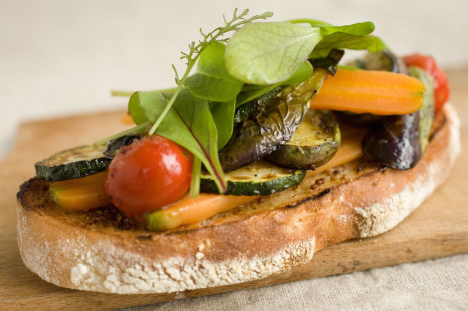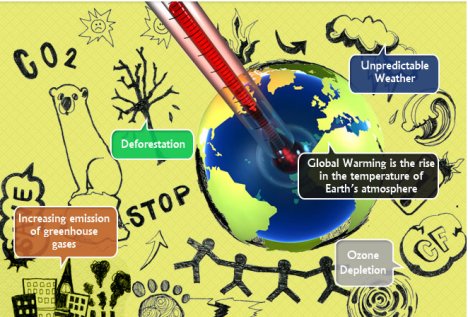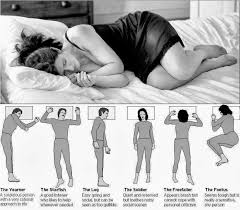Make Meatless Mondays a weekly practice for 2014?
and IT WILL BE GOOD FOR THE CLIMATE AS WELL


This year has seen much heated debate over climate change – on the campaign trail, in Washington and in newspaper headlines. But a conclusion shared by a growing number of climate experts underscores the fact that Americans can do more than just debate climate change; each and every one of us can take action to fix the problem.
In fact, every time we sit down to eat we can choose to help stop global warning, and it’s as easy as eating our fruits and vegetables.
Let’s look at the big picture. Raising enormous numbers of animals for food—tens of billions globally—causes significant emissions of three of the most important climate-changing gases — methane, carbon dioxide, and nitrous oxide – which disrupts weather, temperature and ecosystem health.
This is one reason the Food and Agriculture Organization of the United Nations calls animal agriculture one of the top causes of climate change, contributing nearly 20 percent of all human-induced greenhouse gas emissions.
Additionally, the mass production of farm animals is a main cause of deforestation, clearing land for grazing as well as to grow corn and soy to feed to billions of farm animals. I don’t think we could create a less efficient and more environmentally troublesome model to feed the world if we tried.
And, of course, the industrial scale production methods inherent to factory farming are the source of inhumane practices and large amounts of animal suffering.
With the mounting evidence of animal agriculture’s damaging toll, leading climate experts, environmental organizations and animal welfare advocates are urging people to take one simple action to yield big results for the planet: eat less meat.
Rajendra Pachauri, Ph.D., the chairman of the United Nations Intergovernmental Panel on Climate Change, which won the Nobel Peace Prize in 2007 with Vice President Gore, makes no bones about his stance, stating “Give up meat for one day [a week] initially, and decrease it from there…”
The European Union has come to the same conclusion. This year, a study for European Commission found that among the behavioral options studied, the continent’s greatest potential for reduction in greenhouse gas emissions by 2020 was to simply reduce its meat intake.
As we start out this New Year and plan how to better ourselves and the world around us, we can start by cutting back on meat for a more sustainable and more compassionate planet.
Eating less meat is a simple solution to a big problem, which is why the Meatless Mondays campaign has gained such widespread support among climate scientists, environmental nonprofits, celebrities like Oprah and Paul McCartney, more than 2,400 hospitals, schools and restaurants and millions of Americans.
An increasing numbers of family farmers also are voicing their support for Meatless Monday as a means to achieve a more sustainable agricultural system. With the rise of industrial-style consolidation, more and more animals are being raised on fewer farms with the result being that factory farming has harmed animals, farmers, and the environment alike.
Eating less meat might be the most simple – and delicious – way to help combat global warming and factory farming in 2013. At The Humane Society of the United States, we call it implementing the Three R’s: reducing the consumption of meat and other animal-based foods; refining the diet by avoiding products from the worst production systems, like gestation crates for breeding pigs and barren battery cages for egg-laying hens; and replacing meat and other animal-based foods in the diet with plant-based foods.
While we don’t know what steps will be taken in 2014 to combat climate change by the world’s politicians and businesses, we can take action for a more sustainable planet every time we eat, and January 1 is as good a day as any to get started.
Small Firms Association warning that tax rates in Ireland are an impediment

The Small Firms Association (SFA) has warned that Ireland’s tax rates are an impediment to entrepreneurship and business start-ups.
SFA chairman AJ Noonan said that despite the impact on the sector in the years since 2008, there are still 200,000 small firms in Ireland, employing 655,000 people and 13,000 new businesses being set up each year.
BUT HE WARNED THAT TAX RATES WERE TOO HIGH.
“The marginal tax rate of 55pc for self-employed at average earnings is well above the OECD average of 36pc. These levels of tax rates are unusual across OECD countries and it is an obstacle for entrepreneurs and business start-ups,” said Mr Noonan.
“Ireland’s small business sector is deeply embedded in the Irish economy; it is now time to put jobs and small business at the centre of everything. With the right environment small businesses in Ireland will generate 20,000 jobs in 2014.”
Eight Sleeping Positions and their effects on your Health
 8
8 
Getting enough sleep is the most important thing – but did you know that how you sleep can also impact your health? Let’s take a look at eight common sleeping positions and what they do to your body.
1. ON YOUR BACK, ARMS AT SIDES
 Sleeping on your back with your arms at your side is generally considered to be the best sleeping position for spine health and it’s good for your neck, too, as long as you don’t use too many pillows. That said, back sleepers tend to snore more than those in any other position and sleep apnea is strongly associated with sleeping on the back.
Sleeping on your back with your arms at your side is generally considered to be the best sleeping position for spine health and it’s good for your neck, too, as long as you don’t use too many pillows. That said, back sleepers tend to snore more than those in any other position and sleep apnea is strongly associated with sleeping on the back.2. ON YOUR BACK, ARMS UP
 This so-called “starfish” position is also good for the back. Whether you have your arms up around your pillow or not, sleeping on your back may also help to prevent facial wrinkles and skin breakouts. However, like the arms-down back sleeping position, this one can also result in snoring and problems with acid reflux. Plus, having your arms up can put pressure on nerves in your shoulders, leading to pain.
This so-called “starfish” position is also good for the back. Whether you have your arms up around your pillow or not, sleeping on your back may also help to prevent facial wrinkles and skin breakouts. However, like the arms-down back sleeping position, this one can also result in snoring and problems with acid reflux. Plus, having your arms up can put pressure on nerves in your shoulders, leading to pain.3. FACE DOWN
 Sleeping on your stomach can improve digestion but unless you’ve developed a way to breathe through your pillow, it most likely leads to you tilting your face in one direction or the other. This can put a lot of strain on the neck. Sleeping face down can also cause back pain, as the curve of the spine is not supported.
Sleeping on your stomach can improve digestion but unless you’ve developed a way to breathe through your pillow, it most likely leads to you tilting your face in one direction or the other. This can put a lot of strain on the neck. Sleeping face down can also cause back pain, as the curve of the spine is not supported.4. FETAL POSITION
The extreme curl of the fetal position can also restrict deep breathing. That considered, sleeping like a fetus can have you sleeping like a baby if you typically have problems with snoring or if you’re pregnant.
5. ON SIDE, ARMS AT SIDES
6. ON SIDE, ARMS OUT
This position has many of the same benefits of sleeping on your side with your arms straight down. However, any side sleeping can cause shoulder and arm pain due to restricted blood flow and pressure on the nerves, which may be exacerbated by having your arms out in front of you.
7. ON THE RIGHT SIDE
 If you’re a side-sleeper, which side you sleep on also makes a difference. Sleeping on the right side can worsen heartburn while sleeping on the left side can put strain on internal organs like the liver, lungs, and stomach (while minimizing acid reflux). For pregnant sleepers, doctors typically advise sleeping on the left side, since this can improve circulation to the fetus.
If you’re a side-sleeper, which side you sleep on also makes a difference. Sleeping on the right side can worsen heartburn while sleeping on the left side can put strain on internal organs like the liver, lungs, and stomach (while minimizing acid reflux). For pregnant sleepers, doctors typically advise sleeping on the left side, since this can improve circulation to the fetus.8. PILLOW-SUPPLEMENTED
Regardless of which sleeping position you prefer, it’s highly likely that you can get a better night’s rest with less pain in the morning by supplementing your body with a pillow.
Back sleepers can put a small pillow under the arch of their spine, side sleepers can place a pillow between their knees, and stomach sleepers can place a pillow under their hips to support the joints and allow for full, pain-free relaxation.
Social welfare fraud claim tip-offs rocket to 21,000

More than 21,000 cases of suspected welfare fraud have been reported to the Department of Social Protection in anonymous tip-offs by members of the public this year.
The massive increase in reports of people abusing the social welfare system, up 2,500pc in just five years, shows that public acceptance of such practices has dropped since the economic collapse.
People allegedly working while claiming benefits make up the majority of the reports, while others related to allegations that lone parents were living with their partners and that people living outside the jurisdiction were claiming benefits.
TRIGGER: Social Protection Minister Joan Burton said that each report made by a member of the public is followed up but social welfare payment is not suspended or stopped solely on the basis of an anonymous report.
The tip-offs, however, may trigger a review of a person’s entitlements.
Minister Burton is expected to soon announce record savings of more than €700m through targeting fraud and clerical errors during 2013.
While the number of anonymous tip-offs from the public has grown rapidly, only 16pc resulted in welfare payments being reduced of stopped, according to a recent survey.
2013 a record year for organ transplants in Ireland
SAYS KIDNEY ASSOCIATION

THE NUMBER OF LUNG TRANSPLANTS AT THE MATER DOUBLES TO 32
This year was a “record” one for organ transplants in the State which reached 293 , the Irish Kidney Association said today.
There were 18 more transplants this year than in the previous record year of 2011, according to end-of-year figures released by the association.
It said the highlight achievement for the year was the more than doubling in the number of lung transplants at theMater Hospital from 14 in 2012 to 32 in 2013. This figure is more than the total number of transplants from 2009 to 2012.
There was also a record 38 living donors taking part in the kidney transplants atBeaumont Hospital, the association said. It also noted that 86 deceased donors saved the lives of 245 people, ten of whom received two organs.
Beaumont Hospital’s transplant team had record activity with 195 transplant operations and 38 living donor operations, the association said. There were 185 kidney operations at the hospital in 2013.
In addition there were 55 liver transplants at St. Vincent’s Hospital and 11 heart transplants at the Mater Hospital.
“Transplantation is a national team effort. The public are an essential element of the team with their generosity to donate organs,” Mark Murphy, chief executive of the Irish Kidney Association said in a statement.
He said transplant teams from St Vincent’s Hospital, the Mater Hospital and Beaumont Hospital had achieved “outstanding results in very difficult times for the health service”.
The HSE’s service plan for 2014 planned more investment in management of organ donation giving “encouragement to the 550 people on transplant waiting lists (of which 480 are waiting for kidneys)”, he said.
For organ donor cards freetext DONOR to 50050 or visitika.ie
€1.75m paid to Irish Farmers to protect 344 rare Hen Harrier birds
Forget about the millions of euro spent on turkeys this Christmas, Ireland’s most expensive bird is the rare and protected Hen Harrier.
New figures show that the Government spend on the bird of prey in the 10 months to the end of October this year amounted to €1.75m — or an average spend of over €5,000 per recorded adult bird.
The most recent national survey recorded between 128 and 172 breeding pairs across the country, giving an estimated total of 344 adult birds.
In response to a Freedom of Information request, the Department of Arts and Heritage confirmed that €1.75m was spent on conservation measures for the bird between January and October 20.
The largest proportion of the monies goes to farmers whose land is located in Special Protection Areas for the Hen Harrier. In the first 10 months of this year, farmers received €1.64m.
The highest amount was received by a Co Clare-based farmer who received €16,054 — with two other farmers from that county receiving in excess of €14,000. Two farmers from Co Galway received the second and third highest amounts at €15,097 and €14,884.
The vast proportion of the remainder — €97,342 — went on farmer planner fees.
SUPPORTED: In a statement yesterday, the Department of Arts and Heritage said it believed that the overall spend on the Hen Harrier represented value for money for the taxpayer.
A spokesman said: “Without the traditional type of hill farming in Hen Harrier areas being supported, it would be expected that the Hen Harrier population would decline and possibly become extinct. The Hen Harrier is a magnificent bird of prey and a beautiful part of Ireland’s natural heritage.”
The spokesman also claimed that the scheme supported farmers to remain on the land.
“The general trend in the absence of such a scheme has been land abandonment and rural depopulation, and without this scheme it is likely that much more high nature value farmland and habitat would have been lost,” he said.
Climate change worse than Scientists thought?
‘CATASTROPHIC RATHER THAN SIMPLY DANGEROUS’
Climate change may be far worse than scientists thought, causing global temperatures to rise by at least 4 degrees Celsius by 2100, or about 7.2 degrees Fahrenheit, according to a new study.
The study, published in the journal Nature, takes a fresh look at clouds’ effect on the planet, according to a report by The Guardian. The research found that as the planet heats, fewer sunlight-reflecting clouds form, causing temperatures to rise further in an upward spiral.
That number is double what many governments agree is the threshold for dangerous warming. Aside from dramatic environmental shifts like melting sea ice, many of the ills of the modern world — starvation, poverty, war and disease — are likely to get worse as the planet warms.
“4C would likely be catastrophic rather than simply dangerous,” lead researcherSteven Sherwood told the Guardian. “For example, it would make life difficult, if not impossible, in much of the tropics, and would guarantee the eventual melting of the Greenland ice sheet and some of the Antarctic ice sheet.”
Another report released earlier this month said the abrupt changes caused by rapid warming should be cause for concern, as many of climate change’s biggest threats are those we aren’t ready for.
In September, the Intergovernmental Panel on Climate Change said it was “extremely likely” that human activity was the dominant cause of global warming, or about 95 percent certain — often the gold standard in scientific accuracy.
“If this isn’t an alarm bell, then I don’t know what one is. If ever there were an issue that demanded greater cooperation, partnership, and committed diplomacy, this is it,” U.S. Secretary of State John Kerry said after the IPCC report was released.


No comments:
Post a Comment